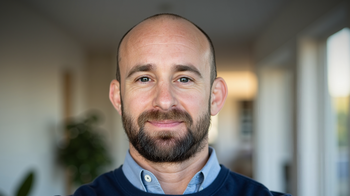Access Does Not Equal Equity: New Study Reveals Stroke Center Certification Benefits Are Unevenly Distributed Across US Communities
Over the past decade, the number of certified stroke centers has surged across the United States. These specialized hospitals are designed to deliver faster, more effective treatments for patients experiencing a stroke, but new research from a UC San Francisco-led study published in Annals of Emergency Medicine suggests that not all communities benefit equally from this expansion.
Although socioeconomically disadvantaged communities experienced the largest relative increase in access to newly certified stroke centers, they saw smaller gains in critical treatment, such as thrombolytic therapy and mechanical thrombectomy, and no significant improvements in mortality or recovery. Specifically, only 68% of patients from disadvantaged communities gained access to a newly certified stroke center, compared to 92% of patients from advantaged communities. Socioeconomically disadvantaged communities saw a 51% relative increase in admissions to certified stroke centers, but no significant improvements in survival or return to home at 90 days. Mechanical thrombectomy – a critical, time-sensitive stroke treatment – decreased slightly among patients in disadvantaged communities, even as it increased in advantaged areas.
Led by researchers at UCSF and the National Bureau of Economic Research, the study analyzed data from 2.8 million Medicare patients hospitalized for acute ischemic stroke between 2009 and 2019. Using national certification data, Census-based neighborhood demographics, and geographic driving time estimates, the team evaluated whether stroke center certification translated into improved care and outcomes across communities with differing levels of socioeconomic disadvantage.
“We found a troubling paradox,” said senior author, Renee Y. Hsia, MD, MSc, a professor of Emergency Medicine at UCSF and an attending emergency physician at Zuckerberg San Francisco General Hospital. “Disadvantaged communities gained the most access to newly certified stroke centers – but those centers were less likely to provide advanced therapies like thrombectomy, and patients didn’t see the same improvements in outcomes as those from more advantaged areas.”
“Stroke center certification is intended to standardize and elevate care,” Hsia noted. “But certification alone isn’t enough. Without addressing structural differences in hospital resources, care processes, and pre-hospital access, we risk reinforcing – and even widening – existing disparities.”
The findings underscore the need for public policy that goes beyond certification, investing in infrastructure, streamlining transfer protocol, and supporting resource-limited hospitals serving disadvantaged populations.
“Our hope is that this work guides more equitable approaches to stroke systems of care – ones that go beyond counting stroke centers and focus instead on delivering their benefits to every patient with stroke, regardless of where they live,” said Dr. Hsia.
Authors
Yu-Chu Shen, PhD, Department of Defense Management, Naval Postgraduate School and National Bureau of Economic Research. Anthony S. Kim, MD, MAS, UCSF Weill Institute of Neurosciences, Department of Neurology, UCSF. Renee Y. Hsia, MD, MSc, Department of Emergency Medicine, UCSF and Philip R. Lee Institute for Health Policy Studies, UCSF.



